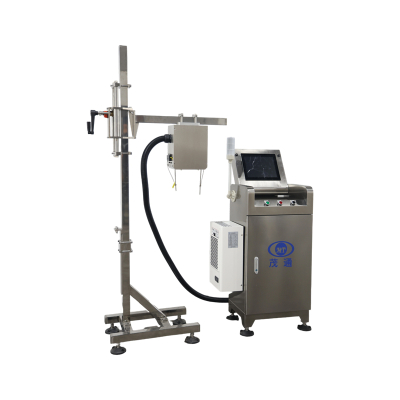What is AI Visual Inspection Technology?
AI visual inspection technology is a product of the deep integration of computer vision and artificial intelligence. By simulating the human visual system, it enables computers to automatically extract, analyze, and understand information from images or videos, thereby completing tasks such as detection, recognition, localization, and measurement. Below, I will introduce it from four aspects: core principles, key technologies, application scenarios, and development trends.
Technical Principles and Processes
The core of AI visual inspection lies in utilizing deep learning models, especially convolutional neural networks (CNNs), to enable machines to automatically learn features from visual data and make decisions. Its typical workflow includes the following key steps:
Image Acquisition and Preprocessing: Acquire images or video streams through industrial cameras, webcams, or sensors. Subsequently, preprocessing is performed on the images, such as denoising, enhancement, contrast adjustment, and size normalization, to improve image quality and lay the foundation for subsequent analysis.
Feature Extraction: Use deep learning models (such as CNNs) to automatically learn and extract key features from images, such as edges, textures, and shapes. Unlike traditional algorithms (such as SIFT and SURF) that require manual feature design, deep learning can automatically complete this process, making it more adaptable.
Recognition and Classification: Based on extracted features, the model classifies targets in an image (e.g., determining the presence of defects) or identifies specific objects (such as parts or faces). Common algorithms include image classification (e.g., ResNet), object detection (e.g., YOLO, MTCNN), and more refined image segmentation (e.g., UNet, DeepLab).
Decision and Output: The system executes decisions based on the analysis results, such as marking defect locations, triggering alarms, or issuing sorting instructions, and feeds the results back to the control system.
Key Algorithms and Technologies
Object Detection and Recognition:
MTCNN: Commonly used for face detection and alignment, it quickly locates faces and key points through cascaded networks. Suitable for single-class object detection scenarios.
YOLO Series: Enables end-to-end real-time multi-object detection, capable of simultaneously recognizing and classifying multiple objects in an image, widely used in autonomous driving, security monitoring, and other fields.
Fine Classification:
Center Loss and Arc-Softmax Loss: These loss functions improve the model's accuracy in fine-grained classification tasks (e.g., distinguishing different faces or vehicle models) by compressing intra-class distances or increasing inter-class distances.
Image Segmentation:
UNet Series: Employs a symmetrical encoder-decoder structure, fusing deep and shallow features through skip connections, making it particularly adept at tasks requiring precise contours, such as medical image segmentation.
DeepLab Series: Utilizes dilated convolution and spatial pyramid pooling techniques to capture contextual information at multiple scales, enhancing segmentation capabilities for complex scenes.
Mask R-CNN: Adds a segmentation branch to object detection, enabling simultaneous object localization, classification, and pixel-level segmentation, suitable for scenarios requiring instance-level analysis.
Main Application Scenarios
AI visual inspection technology has penetrated numerous industries, significantly improving automation and intelligence levels:
| Application Areas | Typical Scenarios and Value |
| Industrial Manufacturing and Quality Inspection | In industries such as electronics manufacturing (e.g., PCB solder joint inspection, component assembly), automotive parts (e.g., connector defect inspection), and food and pharmaceuticals, it performs high-speed, high-precision surface defect inspection (e.g., scratches, dents), assembly integrity checks, and dimensional measurements. It can identify micron-level defects, replacing traditional manual visual inspection and improving efficiency by over 50% |
| Smart Cities and Security | Used for traffic monitoring (license plate recognition, traffic flow statistics, violation detection), public safety (people flow statistics, abnormal behavior recognition such as climbing or falling), and urban management (such as detection of illegal street vending, garbage sorting monitoring) |
| Smart Retail | By analyzing video streams from in-store cameras, it enables customer flow statistics, customer movement analysis, heat map generation, and supports automatic checkout (via facial or product recognition) and inventory management (automatic restocking reminders) |
| Medical and Biometrics | Assists in identifying specific organs and detecting abnormalities (such as X-rays, CT scans) in medical image analysis, as well as biometric verification such as facial recognition and fingerprint recognition |
| Infrastructure Inspection | Utilizes drones equipped with high-definition or thermal imagers to conduct automated inspections of hard-to-reach areas such as oil and gas pipelines, power facilities, bridges, and tunnels, detecting cracks, corrosion, or leakage risks at an early stage |
Development Trends and Challenges: Deepening Technological Integration: Combining AI with 3D vision (such as 3D AOI, CT scans) can accurately capture three-dimensional defects such as welding voids and component warping. New measurement technologies such as quantum sensing are beginning to be explored for application in extremely precise measurement scenarios.
End-to-end intelligent decision-making: The role of technology is evolving from a single "defect determination" to a closed-loop system covering the entire process of "inspection-analysis-traceability-process optimization." The system can integrate with MES (Manufacturing Execution System) and other systems, directly optimizing production parameters through feedback data.
Enhanced flexibility and versatility: The industry is committed to developing more versatile inspection platforms and pre-trained large models. Through transfer learning, it aims to reduce the cost of customized data collection and model training for new production lines and new defect types, adapting to the flexible manufacturing needs of small-batch, multi-variety production.
Challenges: Current challenges include high costs of data collection and annotation in complex scenarios, the need to improve the model's generalization ability when switching between different production lines, and ensuring the stability and reliability of the system in real-time processing.
Summary: AI visual inspection technology, by simulating and surpassing the perception and judgment capabilities of the human eye, is becoming a key force driving the upgrading of manufacturing, the intelligentization of cities, and the improvement of social efficiency. With the continuous evolution of algorithms, computing power, and application scenarios, its accuracy, adaptability, and decision-making capabilities will continue to improve.
Hopefully, the information above will give you a comprehensive understanding of AI visual inspection technology. If you are particularly interested in a specific application area or technical details, I can provide a more in-depth introduction.




